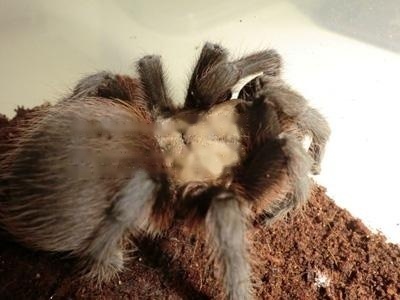
Texas Brown Tarantula
Adult body length is 13-14 cm, suitable temperature is 28-30 ℃, and suitable humidity is 65%. It is recommended to use moist peat, coconut brick and clay as the substrate. It tak
English name: Squeakworm
Origin: Southeast Asian and South Asian countries
Ji Douche worm, commonly known as squeak worm, is a genus Coleoptera Rhinoceros beetle. Miscellaneous feeding habits, adults mainly suck tree sap, and eat less fruit. Larvae eat humus and dead wood, are decomposers, and do not eat plant roots. It is distributed abroad in Southeast Asia and South Asian countries, and domestically in Guangdong, Guangxi, Hainan, Fujian, Yunnan and other provinces (autonomous regions) in the south.
Chinese name : Jidou worm
Alternative name: Squeak wormKingdom: Animalia
Order: Coleoptera
morphological characteristics of adults: dioecious, males are significantly larger than females, oblong. The body is reddish brown to dark brown, and the elytra are often slightly lighter in color and extremely bright. The head is small, the lip base is short, and the front edge has 2 tooth-shaped protrusions. There are 3 lateral spines on the upper side of the tibia of the forefoot, and 4 spines on the outer side of the tibia of the middle and hind feet. Male: body length 35~44mm, width 18~24mm; male head and pronotum have a nearly triangular powerful single-forked horn, the head and forehead are upturned and curved backward, and the fork at the end is relatively small. Deep, the horns of the worst-developed individuals are small and short, nearly perpendicular to the head, and not curved backward; the horns of the pronotum dorsal plate are partially forked down, and only traces of the horns are seen in the worst-developed individuals; the pronotum is bright and smooth , Occasionally a small number of scattered rough engraving points; the small scutellum is nearly equilateral triangle, the elytra buttocks are prominently raised, and the small scutellum and elytra are smooth. Female: body length 31~34mm, body width 17~19mm. The head and face are rough without horns, and there is only one pair of mounds in front of the forehead, which are vaguely visible, and the pronotum is simple. Pronotum and elytra densely dotted with small engravings. The rest of the characteristics are the same as the males.
Ji The worms generally make a squeaking sound when they are frightened or touched or mated. It is a normal phenomenon, which is the sound of elytra rubbing their backs.
Artificially raised adults can be raised for more than 3 months in a controlled environment, while wild individuals can be raised for a longer period of time. Shorter, but generally can survive for 1 month. The basic equipment for rearing is the same as that of stag beetles, but Ji douchong The damage ability is low, and slightly more individuals can be reared in the tank at the same time. The recommended rearing box is a 3-foot tank, with 10M humus at the bottom, 2~5 branches with a diameter of about 10M, some of which are placed upright, and the rest can be placed diagonally. The top of the branches is about 10M away from the box cover. for it to climb. 2~3 flat stones are scattered on the subsoil for placing bait.
You can eat all kinds of juicy fruits, but pineapple and cantaloupe are better, if you can use insects to eat jelly, it is better. If more individuals are raised, they must be placed on the stones when feeding, so as to prevent the males from competing for food and fighting with each other. The feeding temperature is between 23 and 28 °C. If an electric heating sheet is used, it is better to cover or wrap the heating sheet with wire mesh, and cover the humus to avoid direct contact with the insects. The humidity requirements are lower. The tolerance range is large, but it is still better to spray water vapor with a sprayer every day, and the humidity of the subsoil can feel moist when touching.